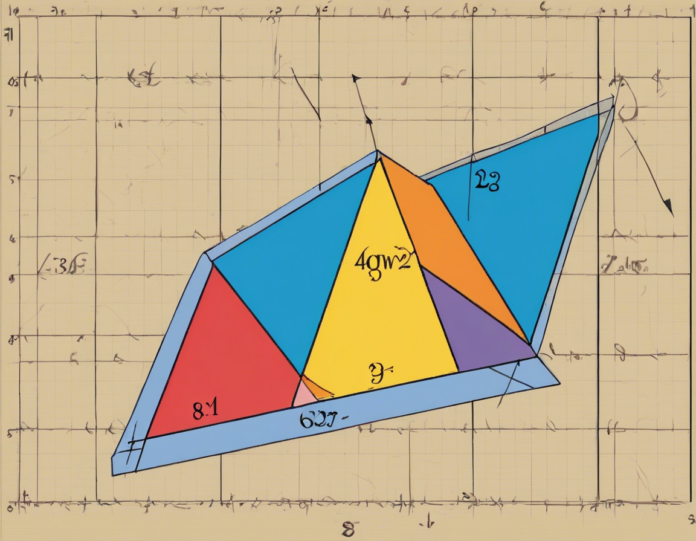Introduction
When studying geometry, one of the key concepts that often arises is that of angles within different shapes. In the case of parallelograms, properties and relationships of angles play a significant role in understanding the characteristics of these four-sided figures. One specific type of angles that we will focus on in this discussion is adjacent angles.
Understanding Parallelograms
Before diving into adjacent angles in parallelograms, let’s quickly review what a parallelogram is. A parallelogram is a quadrilateral with two pairs of parallel sides. This means that opposite sides are equal in length and parallel, while opposite angles are also equal. Moreover, the sum of adjacent angles in a parallelogram is always 180 degrees.
Adjacent Angles in Parallelograms
Adjacent angles are angles that share a common vertex and a common side but do not overlap. In a parallelogram, there are two sets of adjacent angles. These adjacent angles are formed when a transversal line intersects two parallel lines, which are the sides of the parallelogram.
Opposite Angles in Parallelograms
In a parallelogram, each pair of opposite angles are equal. This property is crucial to understanding the relationships between different angles within the shape. When you know the measurement of one angle in a parallelogram, you can easily determine the measurements of the other angles using the properties of opposite and adjacent angles.
Adjacent Angle Relationships
In a parallelogram, the adjacent angles have specific relationships that can help in solving geometric problems efficiently. Here are some key relationships to keep in mind:
1. Consecutive Angles
Adjacent angles in a parallelogram that share a common side are known as consecutive angles. The sum of two consecutive angles in a parallelogram is always 180 degrees. This means that if one angle measures x degrees, the angle next to it will measure (180 – x) degrees.
2. Supplementary Angles
Adjacent angles in a parallelogram are also supplementary, meaning that the sum of their measures is 180 degrees. If one angle measures x degrees, the adjacent angle will measure (180 – x) degrees, forming a straight line.
3. Parallel Lines and Transversals
The relationship between parallel lines and transversals in a parallelogram is fundamental to understanding adjacent angles. When a transversal intersects two parallel lines, alternate interior angles are equal, as well as corresponding angles. These relationships can help in determining the measures of adjacent angles within the parallelogram.
Using Properties of Adjacent Angles
Knowing the properties and relationships of adjacent angles in a parallelogram can be advantageous when solving geometry problems. By understanding how angles interact within the shape, you can easily calculate unknown angles and verify geometric theorems.
Applications of Adjacent Angles in Real Life
While the concept of adjacent angles in parallelograms may seem theoretical, its applications extend beyond the classroom. Architects, engineers, and designers often use geometric principles, including the properties of adjacent angles, in their work. By understanding how angles behave in parallelograms, professionals can accurately design structures, create blueprints, and solve spatial problems.
FAQs (Frequently Asked Questions)
1. What is the sum of adjacent angles in a parallelogram?
The sum of adjacent angles in a parallelogram is always 180 degrees.
2. How do I identify adjacent angles in a parallelogram?
Adjacent angles in a parallelogram share a common vertex and a common side but do not overlap.
3. Are opposite angles equal in a parallelogram?
Yes, in a parallelogram, opposite angles are equal.
4. How can I use the concept of adjacent angles in real-life applications?
Understanding the properties of adjacent angles in parallelograms can be useful in fields such as architecture, engineering, and design.
5. Why are adjacent angles important in geometry?
Adjacent angles play a crucial role in understanding the relationships between angles in geometric shapes, helping in problem-solving and theorem verification.
In conclusion, exploring adjacent angles in a parallelogram reveals the intricate relationships between angles within the shape and how these angles interact based on geometric properties. By grasping these fundamental concepts, one can gain a deeper understanding of the characteristics of parallelograms and their applications in real-life scenarios.









